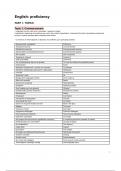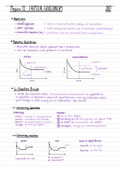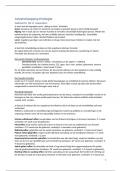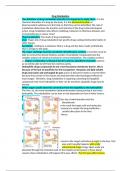Lecture 1
Public policy and behavior change – Tummers (2019).
Changing behavior is often necessary to tackle societal problems (e.g. if we want people to be
healthier, we need to make sure they exercise more and consume less sugar and fat). There are
policy instruments governments use to change behavior: financial incentives, bans and mandates,
information campaigns, and nudges.
However, governments should not be manipulators, they need support for behavior change. If
there is no support, public employees who do not support governmental actions can, for example,
sabotage public policies.
Policy instruments to stimulate behavior change
Traditional governmental instruments to achieve behavior change: the carrot (changing behavior by
changing incentives; e.g. financial incentives however, small economic incentives may have no
effect and are inefficient; and economic incentives can crowd out prosocial motivation. Example:
subsidizing electric cars), the whip (e.g. a smoking ban in public places; or mandates, like compulsory
education), and the sermon (information campaigns, e.g. about drinking alcohol educational
programs are ways of communicating and socializing people into desired behaviors).
The carrot, whip, and sermon are based on rational decision making. However, people do not make
completely rational decisions policy makers should use notions of bounded rationality for
behavior change. These insights can be used in nudging. A nudge is a way to change behavior
without prohibiting options or significantly changing its costs (e.g. clarifying social norms
messaging that “Nine out of ten people pay their tax on time” causes more people to pay their taxes
on time) ‘making desired bahavior easy’. making desired bahavior easy’.
Resistance to behavior change
Effectiveness of policy instruments is context dependent. For example, changing the default can be
effective, but can also have negative effects when strong stakeholders oppose it. An American
example: overdraft coverage, which makes that you can make a payment when you don’t have
enough money in your account (paying a large fee). Especially lower-income people use this. The
government wanted to address this and change the default in not having overdraft coverage.
However, banks were unwilling to give up this profitable part of their business. They used various
(behavioral) tactics to opt customers into overdraft coverage.
A conceptual framework for behavior change by governments
The example above shows that the government must take the impact of stakeholders into account
when developing public policies to stimulate behavior change. There are 3 types of support: political
support, organizational support, and personal support.
CASE: General practitioners (GPs) prescribe antibiotics when it is not necessary use the power of
social norms to ensure that doctors prescribe fewer antibiotics (= nudge ; send message to tell the
GPs that they prescribe more antibiotics that their colleagues in the area, they deviate from the norm
provided the desired effect, they prescribed less antibiotics). After this study, a sermon was used
(GPs received patient-focused information that promoted reduced use antibiotic use no effect).
- Effectiveness: nudge was a success, sermon was ineffective. However, it is not clear how long the
effects of the nudge last, do researchers need to keep sending messages, or is one enough?











